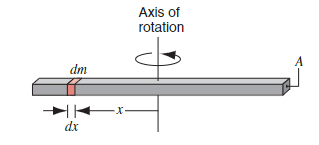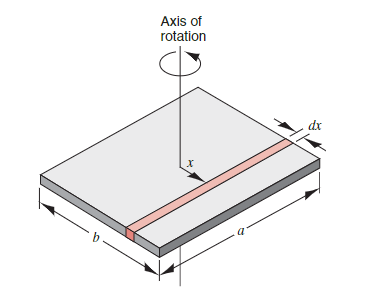A solid body is made up of a number of particles. We can calculate its rotational inertia by taking the sum of the rotational inertias of each particle.
To do so, imagine the body divided into a large number of small mass elements
If we make the size of each mass element smaller and smaller, we can transition to calculus:
We can use this to create varying formulas for different types of solid bodies.

For example, for a rod:

The rod has a length
If we want to rotate the rod about its end, use the Parallel Axis Theorem substituting this for
Or for a plate:
We can divide the plate into a series of strips where we consider each to be a rod.

Note that the plate has extremely small height; this picture shows a large amount.
The mass of the strip
The rotational inertia
Substituting
Taking the integral from
We can continue using this method for a cube using a stack of plates, etc.